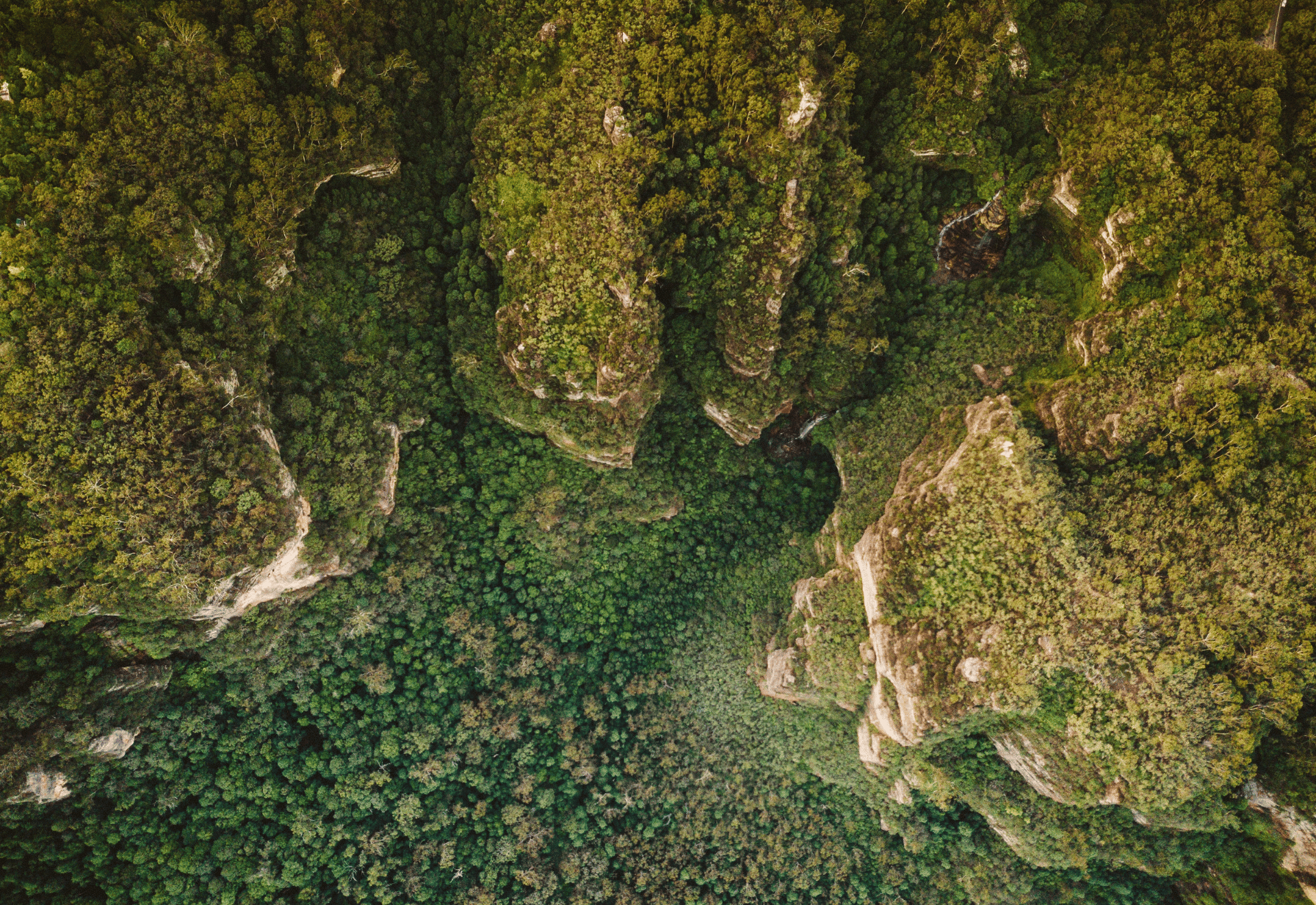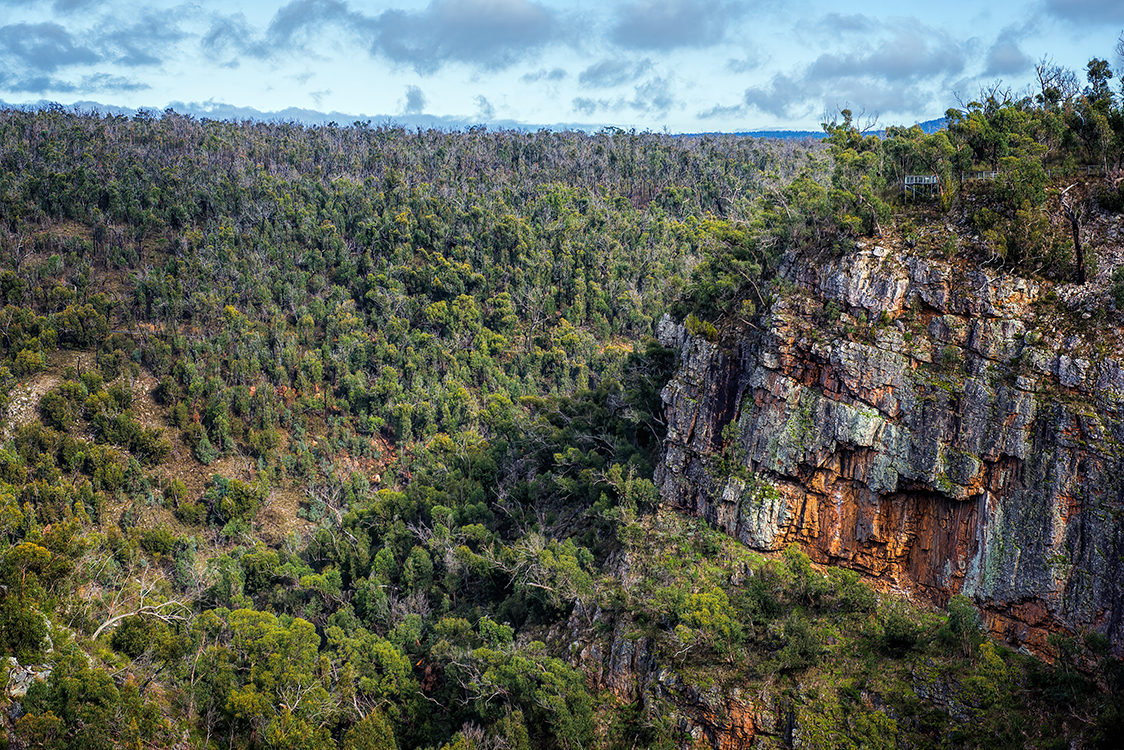
What makes our National Heritage Areas so significant?
Australia currently has 119 National Heritage places listed on the Commonwealth Heritage List. These natural, historic and Indigenous places are considered to have outstanding significance to the nation.
Climate threats to National Heritage places
Of the natural National Heritage places we reviewed, these are likely to be impacted by climate change:
- Australian Alps National Parks and Reserves
- Dampier Archipelago
- Elizabeth Springs
- Fraser Island (Kgari)
- Glass House Mountains National Landscape
- Grampians Greater Gariwerd National Park
- Great Barrier Reef
- Greater Blue Mountains
- Ku-ring-gai Chase National Park
- Kurnell Peninsula Headland
- Lesueur National Park
- Macquarie Island
- Porongurup National Park
- Recherche Bay (NE Peninsula) Area
- Stirling Range National Park
- Uluru-Kata Tjuta National Park
- Warrumbungle National Park
- Wet tropics of Queensland
- Witjira-Dalhousie Springs National Park
Climate risks and the Australian Alps National Parks and Reserves

In a mostly dry and flat continent, the well-watered, snow-clad and mountainous area of the Australian Alps contain a diversity of plants and animals, many of which are found nowhere else on Earth. Its mesmerising mountain vistas and blue alpine lakes make the Australian Alps significant for many who go there to explore, rest and recharge.
The Management Plans for several National Parks within the Australian Alps recognise the threat of climate change to the values of the area. For example, the 2016 Greater Alpine National Parks Management Plan notes the parks are already facing challenges from climate change, including the increased frequency of extreme weather like heatwaves, bushfires, heavy precipitation and storms.1

More recently, IPCC WGII notes the loss of habitat for endemic species due to snow loss and increases in fire, drought and temperature.2
-
Read more evidence on climate damage to our Alpine National Parks and Reserves
The Management Plans for a number of National Parks within the Australian Alps have recognised the threat of climate change to the values of the Australian Alps.
The 2016 Greater Alpine National Parks Management Plan states, for example:
- Climate change is likely to exacerbate many of the existing threats to biodiversity (invasive plants, animals and pathogens) and has the potential to fundamentally change the parameters of ecosystems and viability of species.3
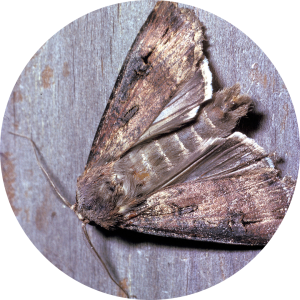
Bogong Moth (Agrotis infusa).
Photographer: Jean-Paul Ferrero- The Parks are already facing challenges from a changing climate. Evidence of slow-onset changes has been mounting for several decades, and extreme weather is becoming more common, the most concerning of which are heatwaves and subsequent bushfires, heavy precipitation and storms.4
-
Evidence of future risks to Australia's Alpine National Parks and Reserves
- The Alps Natural Ecosystem is considered particularly vulnerable to the impacts of climate change: the relatively low height of the Australian Alps compared with most mountain areas of the world means that species have little opportunity to migrate to higher altitudes, there is potential for invasive species and native herbivores – kangaroos and wallabies, which are currently absent from alpine areas – to extend uphill and there is limited knowledge about alpine species’ ability to adapt. The Alps’ Natural Ecosystem contains many rare and endemic species and communities that take a long time to recover from bushfire.5
- The Wet Forest and Rainforest Natural Ecosystem is also vulnerable to the impacts of climate change with the predicted increases in bushfire frequency and severity. The wet forests require periods of around 20 years between fires to allow the tree species to set seed.6
- Increased temperatures will reduce the extent of alpine flora and fauna due to their limited opportunity to retreat to higher altitudes, and the decrease in the amount and duration of snow and subsequent lower runoff will also affect the population dynamics and survival of a number of mammals.7
- Climate change is likely to alter the attributes and availability of habitats, and magnify loss of habitat such as hollow bearing trees and existing threats including fragmentation and spread of invasive species.8

Mountain pygmy-possum (Burramys
parvus). Photograph: Australian Alps
collection Parks Australia. CC BY 3.0. -
Endnotes
- Parks Victoria, Greater Alpine National Parks Management Plan (August 2016), 34-35.
- IPCC WGII, Chapter 11, p 11-68.
- Parks Victoria, Greater Alpine National Parks Management Plan (August 2016), 34-35.
- Parks Victoria, Greater Alpine National Parks Management Plan (August 2016), 34-35.
- Parks Victoria, Greater Alpine National Parks Management Plan (August 2016), 45.
- Parks Victoria, Greater Alpine National Parks Management Plan (August 2016), 48
- Parks Victoria, Greater Alpine National Parks Management Plan (August 2016), 34-35.
- Parks Victoria, Greater Alpine National Parks Management Plan (August 2016), 53
Climate risks and the Grampians Greater Gariwerd National Park

Another example of a National Heritage Area under threat from climate damage Victoria’s Grampians Greater Gariwerd National Park.
The Grampians Greater Gariwerd National Park is celebrated for its rugged dramatic landscape, ancient rock art paintings and abundant array of plants and animals. But climate change is already impacting this spectacular area.1
The 2021 Management Plan for the Park notes the frequency of extreme weather events is increasing, with droughts, complex fires, floods and landslides more prevalent in recent years.2
Potential consequences include changes to species abundance (including extinctions) and habitat distribution, impacts on key cultural species and accessible resources (e.g. Aboriginal food, medicine and fibre species), and changes to the physical environment (e.g. rainfall, stream-flow regimes, fire frequency).3

Grampians National Park.
Photograph: Indigo Skies CC BY-3.0.
-
Read more of evidence on climate impacts to the Grampians Greater Gariwerd National Park
The 2021 Management Plan recognises the impact of climate change on the Park to date. In particular, it states:
- The effects of climate change are already being experienced within the landscape through bushfires, more intense seasonal floods, longer dry spells and higher average temperatures. The frequency of extreme events is increasing, with droughts, complex fires, floods and landslides more prevalent in recent years.4
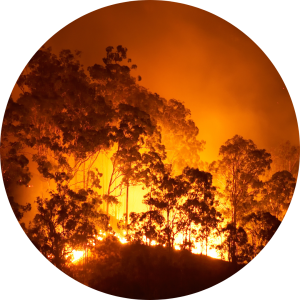
-
Future climate risks to the Grampians Greater Gariwerd National Park
The 2021 Management Plan also details the risk climate change poses to the Park into the future.5 This includes:
- Potential consequences of climate change include changes to species abundance (including extinctions) and habitat distribution, impacts on key cultural species and accessible resources (e.g. Aboriginal food, medicine and fibre species) and changes to the physical environment (e.g. rainfall, stream-flow regimes, fire frequency).
- Climate change is a particular threat to small mammals that live in the heathlands of Gariwerd due to predicted lower rainfall and increased fire frequency. These conditions are expected to create heathland with more open vegetation, leaving small mammals more vulnerable to predators. Recent surveys have detected Southern Brown Bandicoot and Long-nosed Potoroo only within wetter heathland and scrub habitats, which are denser than more recently burnt, drier heathland areas, where past observations have been from more open woodland areas.
- Wetland and riparian health are also impacted by natural disturbances, such as bushfires and floods. The frequency and intensity of these events are exacerbated by climate change, resulting in excessive erosion, increased sediment transport and high nutrient loads. Altered water temperatures and reduced water quality can affect the health of aquatic species.
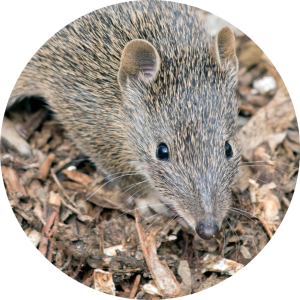
Southern Brown Bandicoot (Isoodon obesulus)
Endangered, Grampians National Park. -
Endnotes
- Parks Victoria, Greater Gariwerd Landscape Management Plan (November 2021), ix, 77.
- Parks Victoria, Greater Gariwerd Landscape Management Plan (November 2021), ix, 77.
- Parks Victoria, Greater Gariwerd Landscape Management Plan (November 2021), ix, 76
- Parks Victoria, Greater Gariwerd Landscape Management Plan (November 2021), ix, 76
- Parks Victoria, Greater Gariwerd Landscape Management Plan (November 2021), ix, 76

